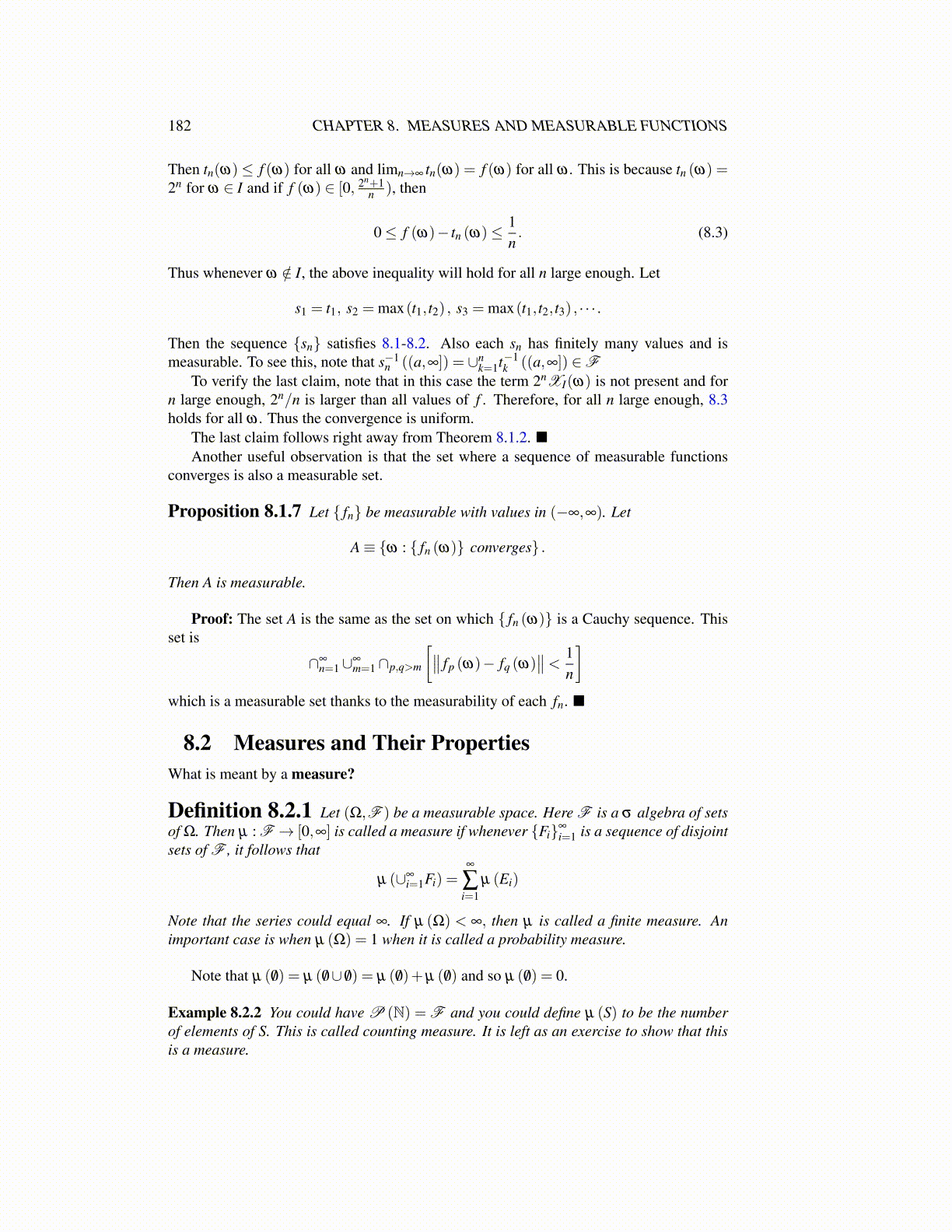
182 CHAPTER 8. MEASURES AND MEASURABLE FUNCTIONS
Then tn(ω)≤ f (ω) for all ω and limn→∞ tn(ω) = f (ω) for all ω . This is because tn (ω) =2n for ω ∈ I and if f (ω) ∈ [0, 2n+1
n ), then
0≤ f (ω)− tn (ω)≤ 1n. (8.3)
Thus whenever ω /∈ I, the above inequality will hold for all n large enough. Let
s1 = t1, s2 = max(t1, t2) , s3 = max(t1, t2, t3) , · · · .
Then the sequence {sn} satisfies 8.1-8.2. Also each sn has finitely many values and ismeasurable. To see this, note that s−1
n ((a,∞]) = ∪nk=1t−1
k ((a,∞]) ∈FTo verify the last claim, note that in this case the term 2nXI(ω) is not present and for
n large enough, 2n/n is larger than all values of f . Therefore, for all n large enough, 8.3holds for all ω . Thus the convergence is uniform.
The last claim follows right away from Theorem 8.1.2. ■Another useful observation is that the set where a sequence of measurable functions
converges is also a measurable set.
Proposition 8.1.7 Let { fn} be measurable with values in (−∞,∞). Let
A≡ {ω : { fn (ω)} converges} .
Then A is measurable.
Proof: The set A is the same as the set on which { fn (ω)} is a Cauchy sequence. Thisset is
∩∞n=1∪∞
m=1∩p,q>m
[∥∥ fp (ω)− fq (ω)∥∥< 1
n
]which is a measurable set thanks to the measurability of each fn. ■
8.2 Measures and Their PropertiesWhat is meant by a measure?
Definition 8.2.1 Let (Ω,F ) be a measurable space. Here F is a σ algebra of setsof Ω. Then µ : F → [0,∞] is called a measure if whenever {Fi}∞
i=1 is a sequence of disjointsets of F , it follows that
µ (∪∞i=1Fi) =
∞
∑i=1
µ (Ei)
Note that the series could equal ∞. If µ (Ω) < ∞, then µ is called a finite measure. Animportant case is when µ (Ω) = 1 when it is called a probability measure.
Note that µ ( /0) = µ ( /0∪ /0) = µ ( /0)+µ ( /0) and so µ ( /0) = 0.
Example 8.2.2 You could have P (N) = F and you could define µ (S) to be the numberof elements of S. This is called counting measure. It is left as an exercise to show that thisis a measure.